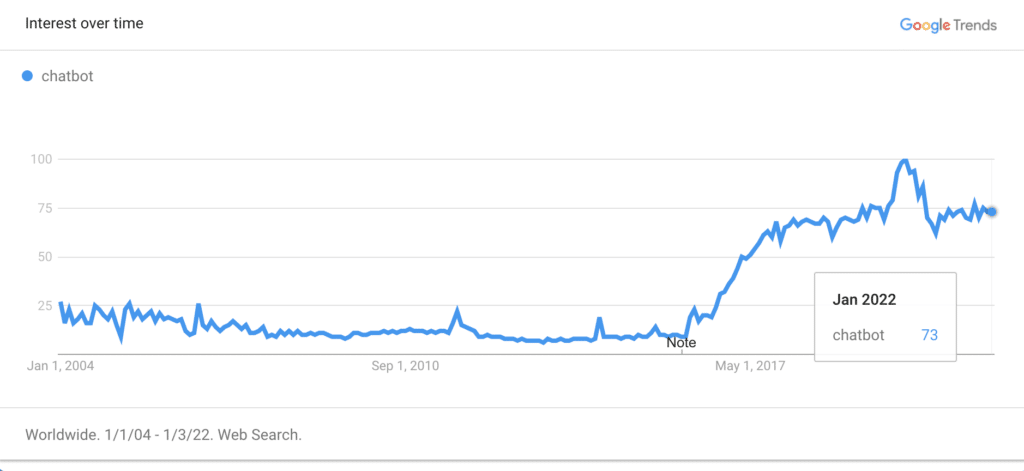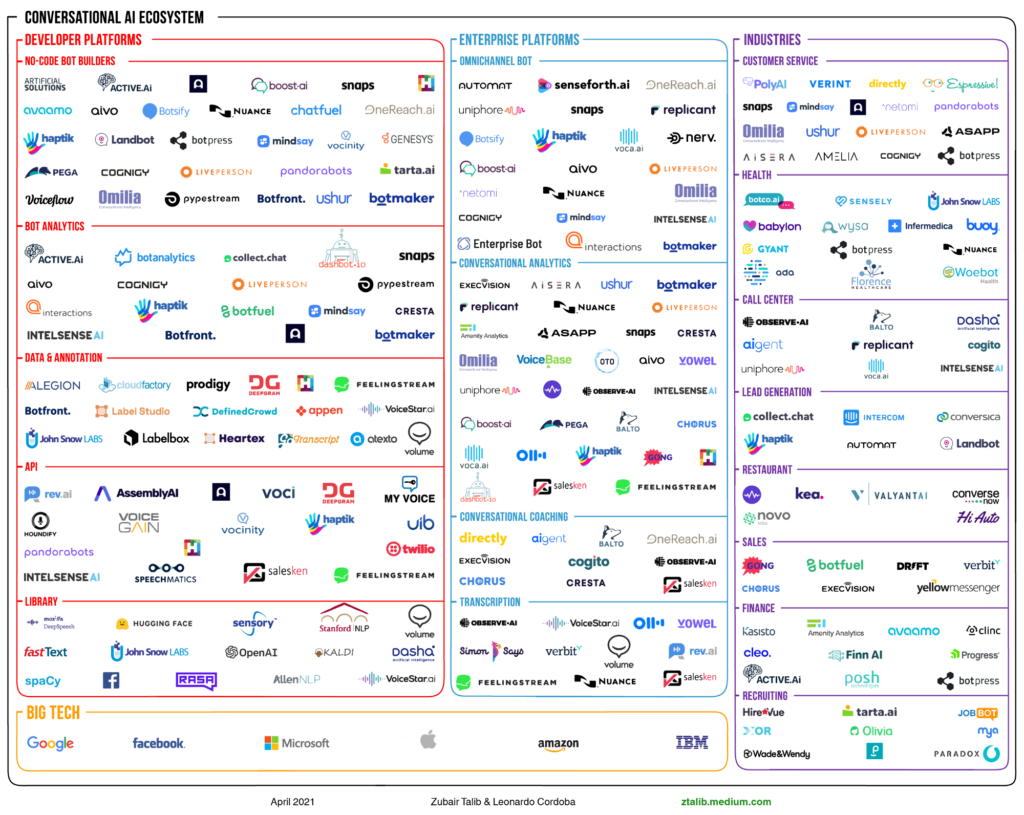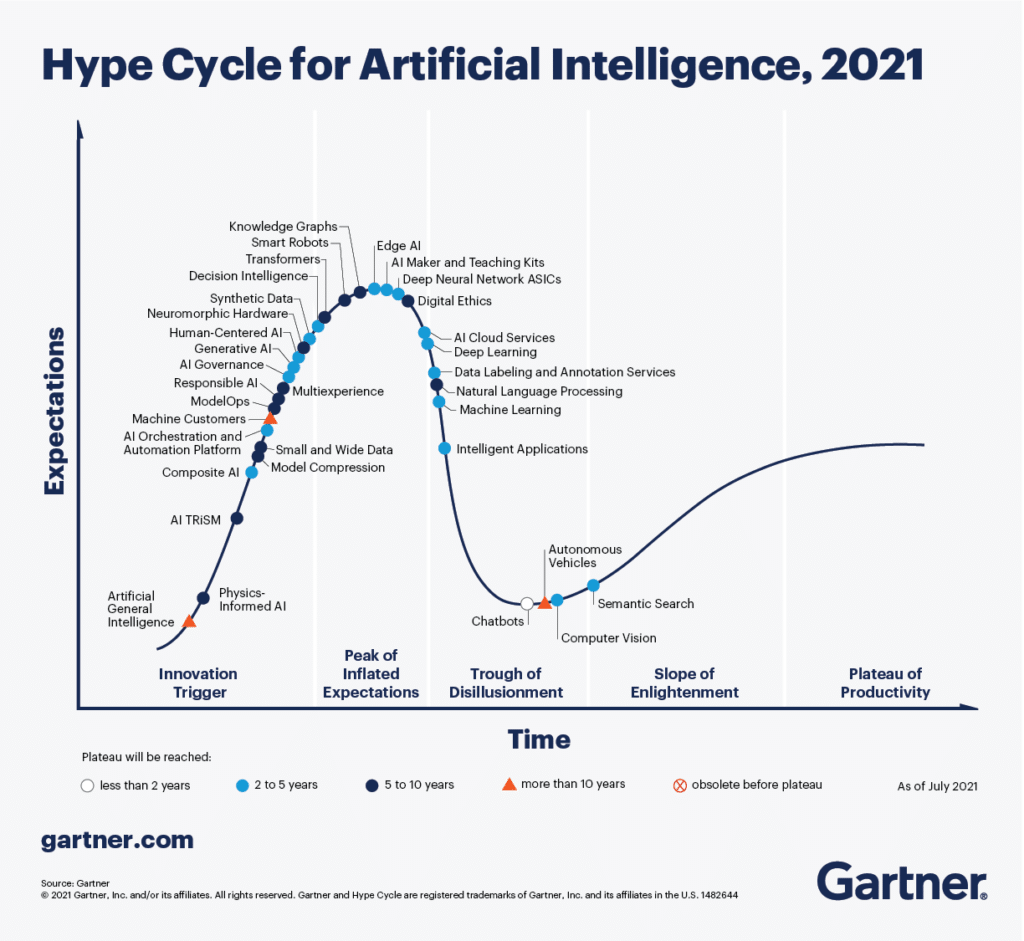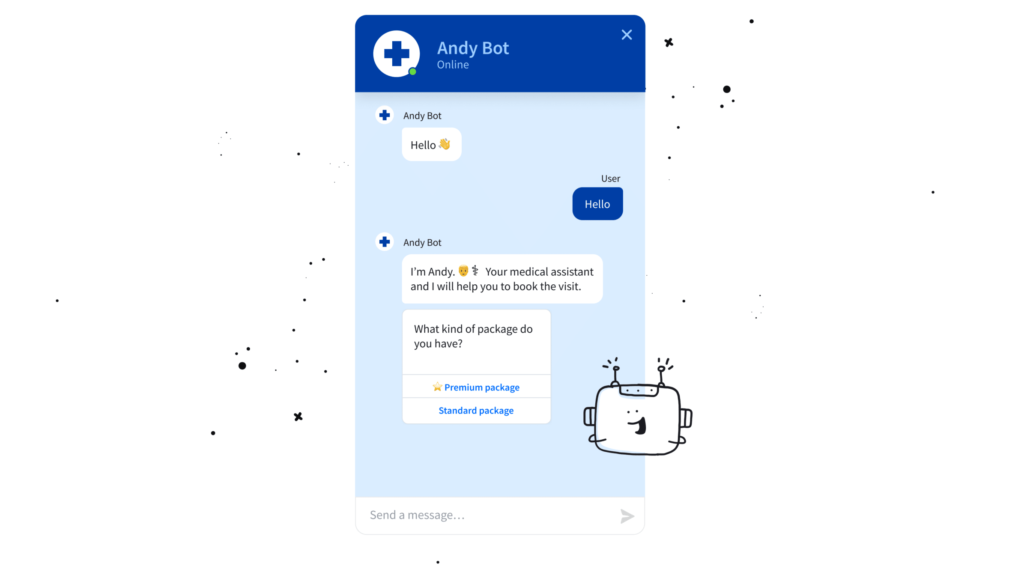Customer contact deflection with chatbots; it's the quintessential example of AI for a contact centre. The instant a customer first touches your contact centre presents an opportunity for engagement with an AI system. Most often, the aim is to deflect the customer through self-service of the inbound query.
Deflection is most often facilitated by interactive chatbots or auto-response systems, allowing customers to communicate using natural language or through a series of interactive buttons or menus. This technology is broadly termed "conversational intelligence" and each implementation is a "chatbot".
Are chatbots being adopted? Yes
Chatbot technology has enjoyed gains in popularity in recent years with improvements in the capabilities of computers to understand text driving accuracy improvements in the detection of customer intentions and, simultaneously (not unrelated), better general acceptance of chat-based support channels for consumers and contact centres. A very widely cited report from Gartner in 2011 predicted that 85 % of customer interactions would be facilitated by automated machines by 2020, demonstrating the scale of adoption expected. Adoption indeed has been strong, and the chatbot market is projected to continue to see strong growth though 2026 to over $100 Bn globally.

The ecosystem of companies growing around the opportunity is mind-boggling, leading to a variety of approaches to achieve a working chatbot at your contact centre. One can opt to use a lower-level system that provides chat and NLP APIs (such as Google DialogFlow, Facebook Wit.ai, or Amazon Lex, IBM Watson), or specific chatbot builders that integrate with your customer service platform (e.g. Ada, Ultimate.AI, Drift, ServisBot), and often the large contact centre system providers have built in chatbot technologies (Genesys, Salesforce, Intercom etc.)

The Overpromising may be over
Over 2015-2020, there has been an element of "over promising" for chatbot technologies. The standard hype-cycle of excitement has applied, and for a moment, marketing messages would have assured you that you'd never need a human agent in a contact centre after 2025.
As of 2021/2022, Gartner places "chatbots" firmly in the trough of disillusionment. According to their analysts, we're past the peak of expectations and hype, and, typically at this point, the market adjusts to the reality and will start to engage with conversational intelligence in earnest over the coming years, ideally reaping the "not overhyped but still plentiful" benefits of the technology. Multiple advances in NLP technology have also improved the ability of chatbots to understand customer intent in open conversation, improving outcomes for adopting businesses and heralding renewed optimism for chatbot usefulness.
In fact, chatbots are projected to see over a 100% increase in their adoption rates through 2025 and are the leading AI use cases in enterprises today. Chatbot technology and providers have reached maturity, and this is driving rapid adoption across industry.

How many contacts can you deflect with a chatbot?
The success of chatbot implementations is measured with how many contacts are contained within the chatbot, i.e. what percentage of chat sessions do not require elevation to a human agent. These interactions translate directly to cost savings for the contact centre, and potentially more satisfied customers if they get to their answers faster.
The degree of completely automated interactions achievable depends on the contact centre implementation, the degree of integration between the chatbot and internal systems, and the type of queries that are common. In the best cases, contact centres report up to 80% of queries being contained within chatbot implementations. According to a New York Times article, General Motors successfully answers 60% of customer questions with a chatbot using IBM.
What are the types of chatbots available?
Chatbots can broadly be separated into a two different types, and the best approach for each contact centre depends on the mix of incoming contacts, the access to backend systems, and the appetite for integration.
- Button-based, menu driven system.
In these chatbot systems, customers move from menu to menu in a chat system, guided by the most common answers to each. Through thoughtful design, customers are guided to the answer to their query, or the bot can actually action a change on behalf of the customer, for example, cancelling an order, or looking up an account balance. These bots are similar in design to IVR systems used for phone deflection, but can be delivered across any text-based channel. Generally, button-based bots are easier to design, get live, and maintain, than language-based bots. - Language-based chatbots
Language-based free flowing chatbots use text classification techniques to guess at the “intent” of customers when they contact based on what they type, and then response with automated responses. Customers are allowed to enter their query freely into a text box, and not choose from a set of options. During the build of a chatbot, a predefined list of “intents” should be determined that capture the most common query types for the contact centre and example phrases will be required to train the chatbot. This process is facilitated in no-code user interfaces within many chatbot vendor systems. Language-based bots can provide a more natural interface for customers, but can easily lead to frustration in the case of mistaken intent detection.

How do chatbots handover to agents?
With current technology (and future foreseeable technology), chatbots will never handle every conversation with customers – the bot will not understand every request, or the interaction will simply require a human action. A seamless "off ramp" for customers to speak with a human operator is advised for the best customer satisfaction.
For button based chatbots, bots can provide the option for customers to transfer to an agent. In the case for language based systems, utterances such as "speak with an agent", or any utterance not understood by the intent detection system should open options for the customer to speak with a human.
The best systems will allow for a seamless transfer, where the human agent receives the chat complete with the message history between the customer and the chatbot that occurred before the agent connected.
Do I need an integration project?
For a given implementation, the topics that can be tackled using automated chat bot technology is determined by the degree of integration possible with company backend systems.
Standard “FAQ”-type bots that deliver generic answers to common questions from customers can be built completely separately to internal systems. As more complex topics are tackled, many will require customer data or actions to be completed on the customer account, and a deeper integration between the chatbot provider and your internal systems will be required. These integrations will, often require some software development work, but lead to a much more capable bot system.

How do I maintain conversational interfaces?
Technology aside, designing and implementing a chatbot that remains on brand, delivers useful information, and strikes the balance between helping and frustrating customers, is a considerable challenge, often requiring full time engagement from a staff member in a large contact centre. Once live, regular reviews of customer engagement and deflection rates are key to maintain a quality customer experience, improve performance, and find the edge cases that will inevitably arise.
Chatbot Ideal Outcomes
- Immediate cost reductions for interactions that do not require agent intervention. Reductions of up to 80% can be achieved where contact centres have simple or often-repeating query topics.
- Consistent, 24/7, available service with useful answers for customers
- Flexible natural language systems allow customers to communicate naturally and seamlessly
- Simple integrations to facilitate interaction through the customers channel of choice, such as Whatsapp, Facebook messenger, Viber etc.
- An “infinitely scalable” chat assistant that can cater for many customers simultaneously.
Chatbot Potential Pitfalls
- Replication of already-existing and well tested systems in a conversational interface, rather than redirecting customers to existing user interfaces (app / portal / booking systems)
- Poorly designed chat flows that can frustrate customers and reduce NPS scores
- Queries can be misinterpreted by AI systems, frustrating customers and affecting satisfaction
- Truly complex queries are often not handled by chatbots, and the step of “getting passed the chatbot” can be a poor customer experience
- Ever increasing complexity of chatbot logic flows that are difficult to maintain in a chatbot trying to do too much
- Unrealistic expectations of “magical” self-learning capabilities can lead to internal disappointment and disengagement with projects.
- Using a chatbot without integrations to internal systems reduces the scope of what interactions can be automated.










